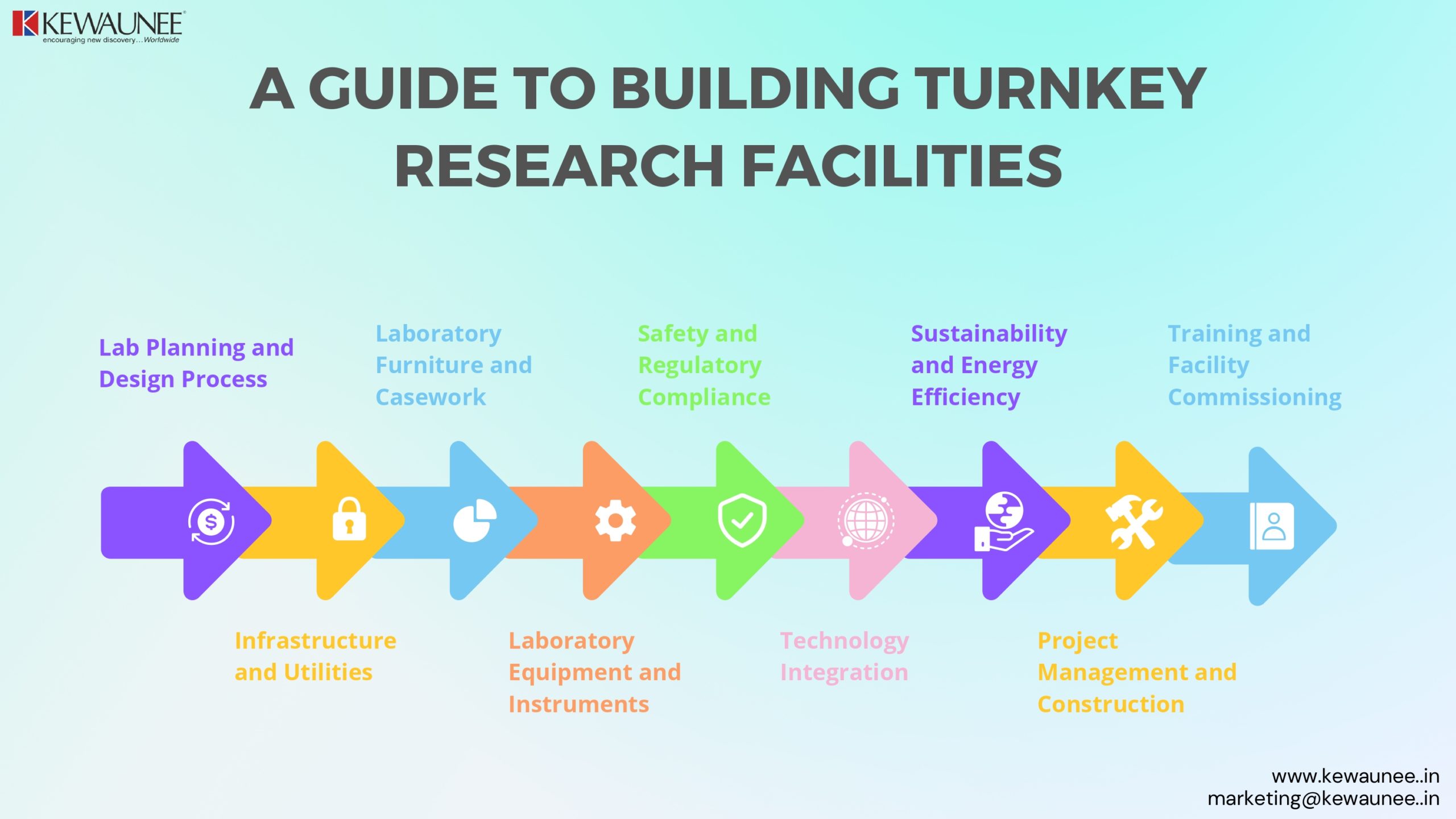A Guide to Building Turnkey Research Facilities
In today’s fast-paced and evolving scientific landscape, the importance of custom-designed turnkey laboratories cannot be overstated. These purpose-built research facilities offer numerous benefits, from optimized workflow efficiency to enhanced safety and regulatory compliance.
In this comprehensive guide, we will explore the key considerations and steps involved in designing turnkey laboratories, ensuring that your research facility is tailored to meet your specific needs and requirements.
I. Importance of custom-designed turnkey laboratories
Custom-designed turnkey laboratories provide researchers with a dedicated and efficient workspace, facilitating seamless experimentation and data collection. By designing a lab that aligns with your unique research goals, you can maximize productivity, accelerate discoveries, and promote collaboration among your team.
II. Assessing Laboratory Needs and Requirements
Before embarking on the design process, it is crucial to assess your laboratory’s needs and requirements. This involves identifying your research goals and objectives, determining the necessary space and layout, and considering any specialized needs, such as biosafety or cleanroom facilities.
III. Lab Planning and Design Process
Collaborating with laboratory design experts is essential during the planning and design phase. Their expertise ensures that your lab’s layout is optimized for efficient workflows, safety, and functionality. Together, you will define functional areas and workflows, ensuring that the lab design supports your research activities seamlessly.
Additionally, creating a comprehensive project timeline and budget will help keep the project on track.
IV. Infrastructure and Utilities
To create an effective turnkey laboratory, attention must be given to infrastructure and utilities. This includes assessing electrical and power requirements, considering plumbing and water supply considerations, and implementing robust HVAC and air quality systems to maintain optimal working conditions.
V. Laboratory Furniture and Casework
Choosing the right laboratory furniture and casework is essential for a functional and ergonomic workspace. Adaptable furniture systems provide flexibility and scalability, allowing you to reconfigure the lab as needs evolve.
Selecting appropriate casework materials ensures durability and suitability for your research activities. Additionally, ergonomic considerations for laboratory workstations promote safety and comfort for lab personnel.
VI. Laboratory Equipment and Instruments
Identifying the essential research equipment needed for your specific research objectives is a critical step. Evaluating equipment specifications and requirements ensures compatibility with your research activities. Coordinating equipment installation and integration with the lab design guarantees seamless functionality and optimal utilization of space.
VII. Safety and Regulatory Compliance
Safety should always be a top priority in laboratory design. Incorporating safety features and systems, such as emergency showers, eyewash stations, and fire suppression systems, is crucial for protecting personnel and research integrity. Ensuring compliance with relevant regulations and standards, such as OSHA and ISO, is essential to maintain a safe and compliant research environment.
VIII. Technology Integration
Incorporating technology into your lab design can enhance efficiency and data management. Implementing laboratory information management systems (LIMS) streamlines data organization and retrieval, improving overall productivity.
Data analytics and automation tools provide valuable insights and facilitate data-driven decision-making. Integration of smart devices and Internet of Things (IoT) technologies enables remote monitoring and control of equipment, enhancing operational efficiency.
IX. Sustainability and Energy Efficiency
Designing turnkey laboratories with sustainability in mind promotes environmental stewardship and reduces operational costs. Energy-efficient lighting and HVAC systems minimize energy consumption and contribute to a greener lab environment.
Incorporating renewable energy sources, such as solar power, reduces reliance on conventional energy. Implementing waste management and recycling programs ensures responsible handling of laboratory waste and promotes a circular economy.
X. Project Management and Construction
To ensure the successful execution of your turnkey laboratory project, it is crucial to hire a reputable contractor or construction team. Their expertise and experience will guide the construction process, ensuring adherence to the design specifications, timeline, and budget. Effective project management guarantees a smooth and efficient construction phase.
XI. Training and Facility Commissioning
Once the construction is complete, providing staff training on equipment usage, safety protocols, and laboratory procedures is essential for a smooth transition to the operational phase. Conducting facility commissioning and validation verifies that all systems and equipment function as intended, ensuring a safe and functional research environment.
Conclusion
Designing a custom turnkey laboratory is a complex undertaking that requires careful consideration of various factors. By following this comprehensive guide, you can create a research facility that optimizes workflow efficiency, promotes safety and compliance, incorporates cutting-edge technology, and embraces sustainability.
Remember, a well-designed turnkey laboratory sets the stage for impactful research and scientific breakthroughs. Embrace the journey of designing your customized research facility and unlock the full potential of your scientific endeavors.
Comments are closed.











